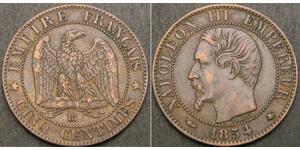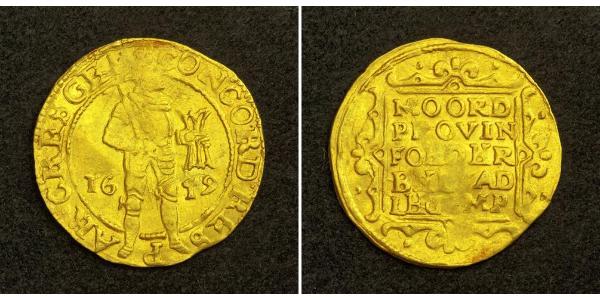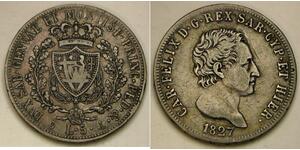(Vendida por $320.0)
1619, Netherlands, Gelderland. Scarce Dutch Gold Knight Ducat Coin. R!
Mint Date: 1619
Region: Gelderland (Netherlands)
Denomination: Gold Knight Ducat
State: Republic of the Seven Provinces
Condition: Light weakness of strike, otherwise XF!
Reference: Friedberg 237, Delmonte 649, KM-5. R!
Material: Pure Gold!
Diameter: 23mm
Weight: 3.44gm
Obverse: Crowned and armored Knight with halberd in right hand and sword in left. Date (16-19) split in fields.
Legend: CONCORD . RES P AR . CRES (= CONCORDIA RES PARVAE CRESCUNT - "Unity makes little business grow!") GEL
Reverse: Legend in five lines inside ornate square. Fields around decorated with floral ornaments.
Legend: MO ORDI PROVIN FOEDER BELG AD LEG IMP
Expanded: "MOneta ORDinum PROVINciarum FOEDERatorum BELGicarum AD LEGem IMPerii"
Translated: "Coin of government of the provincial federation of Belgium Conforming with the law of the Imperial."
The Republic of the Seven United Netherlands (or "of the Seven United Provinces") (Republiek der Zeven Verenigde Nederlanden/Provinciën; also Dutch Republic or United Provinces in short, Foederatae Belgii Provinciae or Belgica Foederata in Latin) was a European republic between 1581 and 1795, in about the same location as the modern Kingdom of the Netherlands, which is the successor state.
Before 1581, the area of the Low Countries consisted of a number of duchies, counties, and independent bishoprics, some but not all of them part of the Holy Roman Empire. Today that area is divided between the Netherlands, Belgium, Luxembourg and parts of France and Germany. The Low Countries in the 16th century roughly corresponded to the Seventeen Provinces covered by the Pragmatic Sanction of 1549 of Holy Roman Emperor Charles V.
Through marriage, war or sale, these states were acquired by the Habsburg emperor Charles V and his son, king Philip II of Spain. In 1568, the Netherlands, led by William I of Orange, revolted against Philip II because of high taxes, persecution of Protestants by the government, and Philip's efforts to modernize and centralize the devolved medieval government structures of the provinces. This was the start of the Eighty Years' War.
In 1579, a number of the northern provinces of the Netherlands signed the Union of Utrecht, in which they promised to support each other in their defence against the Spanish army. This was followed in 1581 by the Act of Abjuration, the declaration of independence in which the provinces officially deposed Philip II.

5 Centime Francia Bronce Napoleon III (1 ...
grupo tiene 7 monedas / 7 precios
Add coin to this group

100 Zloty República Popular de Polonia ( ...
grupo tiene 8 monedas / 7 precios
Add coin to this group

6 Grosh República de las Dos Naciones (1 ...
grupo tiene 4 monedas / 4 precios
Add coin to this group

25 Shilling Republic of Austria (1955 - ...
grupo tiene 10 monedas / 9 precios
Add coin to this group

1 Ducat Principality of Transylvania (15 ...
grupo tiene 12 monedas / 12 precios
Add coin to this group
44 coins were grouped from 2025-05-28 to 2025-06-04
Una de ellas es:
1 Rublo Imperio ruso (1720-1917) Plata
grupo tiene 12 monedas / 12 precios
⇑
5 Lira Italian city-states Plata Carlos Félix de Cerdeña
grupo tiene 18 monedas / 16 precios
⇑











-300-150-72sKbzbis7EAAAFPBUQ1Mk0C.jpg)
-300-150-9UEKbzbiU5UAAAFQcX3krksT.jpg)







